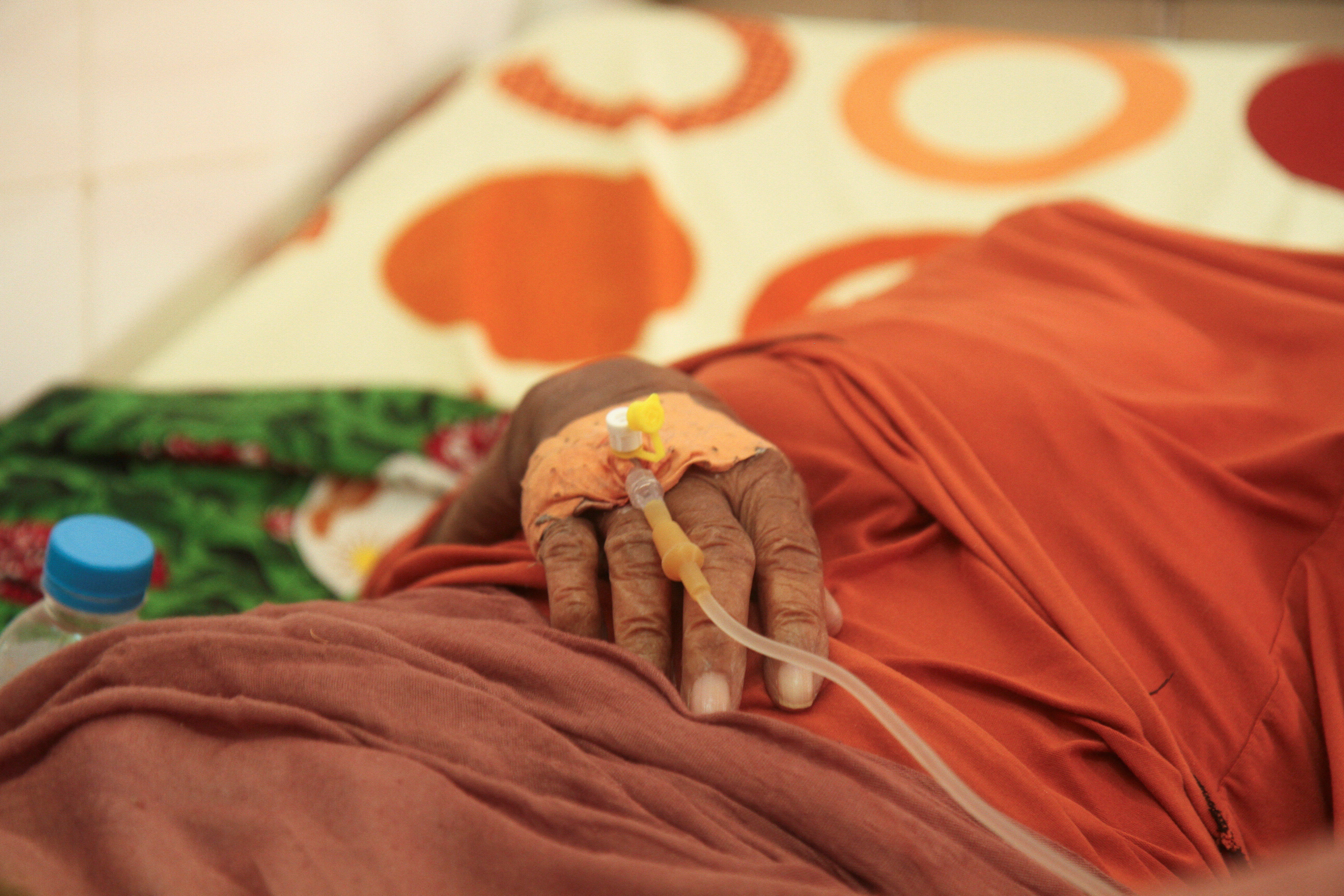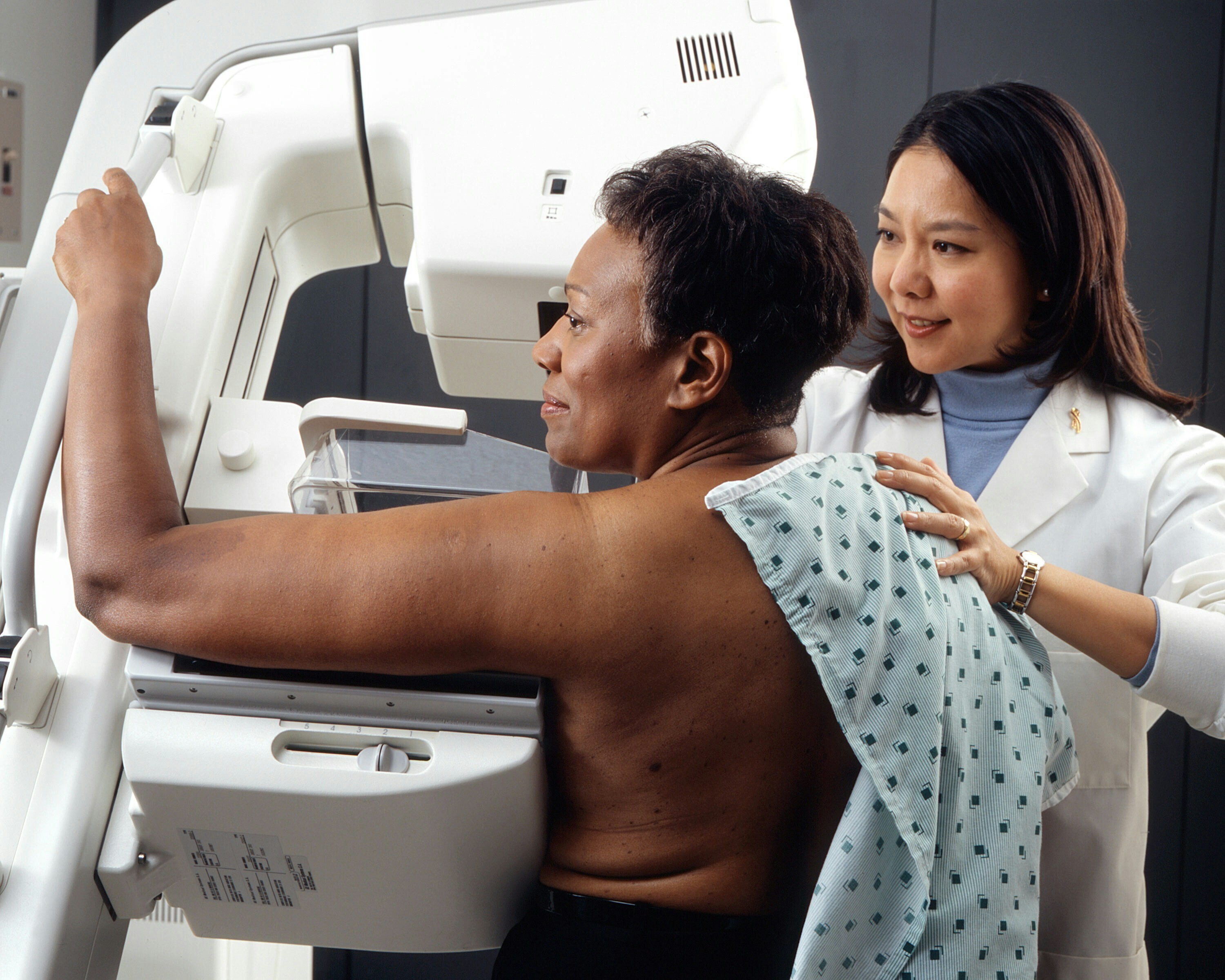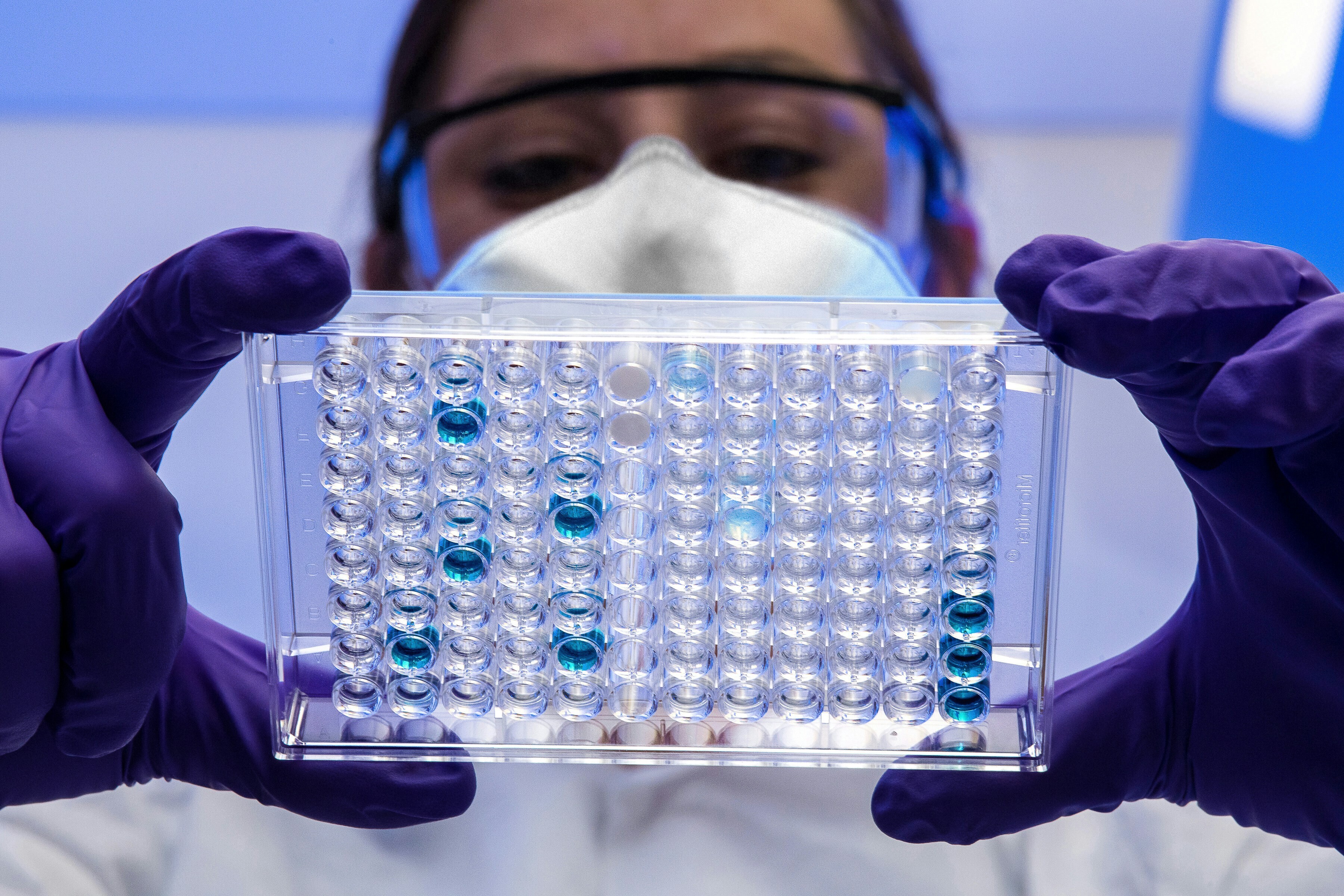I have a rare disease. This is my hope for the future of medicine

Pin-pointing the problem: A doctor examines images of a patient suffering a bone disorder
Image: REUTERS/Yves Herman
Lynsey Chediak
Lead, Precision Medicine, Shaping the Future of Health and Healthcare, World Economic ForumStay up to date:
Global Health
Within the majority of healthcare systems globally, if you have a knee injury, you see an orthopedist who specialises in knees. If you have cancer, you seen an oncologist who specialises in the specific type of cancer with which you are diagnosed. With rare diseases, however, there are no such specialists.
I have a rare disease that impacts every joint in my body. Ever since my diagnosis at birth, I have seen knee doctors, foot doctors, hip doctors, jaw specialists, spinal doctors and others - all in isolation - to relieve my severe mobility limitations and pain.
For rare diseases, there is no specialisation. Patients see a disjointed string of doctors who have likely never heard of their condition. Specialists attempt to provide common treatments and, even less often, creative solutions to alleviate pain, discomfort, and the other adverse impacts of a particular rare disease often without accounting for the disease’s intricacies or nuances. Patients with a rare disease see specific doctors for specific symptoms in a reactive fashion rather than being able to proactively address symptoms characteristic of their disease before they appear. This lack of treatment and treatment planning for rare disease must change.
What is a rare disease?
The World Health Organization (WHO) defines a disease as rare when it affects 1.3 in 2000 people. There are more than 7,000 known rare diseases stemming from a multitude of factors; 80% are genetic in origin while the other 20% have environmental, immunological or other origins.
Now let’s be clear: getting to a diagnosis with a rare disease is a feat in and of itself. Rare diseases predominantly affect children, which makes sense given the vast majority are caused by genetic mutations in utero. Sadly, three out of 10 children born with a rare disease do not live to see their fifth birthday due to a lack of diagnosis and treatment options. Out of those children born with a rare disease who do survive, an accurate diagnosis takes an average of eight years and usually involves multiple incorrect diagnoses, commonly referred to as a ‘diagnostic odyssey’ by the rare disease advocacy community.
Yet rare diseases are not actually as rare in our populations globally as their name implies. Although the WHO estimates that ‘only’ 1.3 in 2000 people have a rare disease, this amounts to more than 400 million people globally. Moreover, one in 15 people worldwide are affected by rare disease, a number that jumps to one in 10 people in the United States specifically. A leading patient advocacy organization called Global Genes estimates that 350 million people globally have a rare disease - that’s more people than the number who suffer from cancer and AIDS combined.
Now that we have established that rare disease is not as rare the name implies, it’s time to look at the most persistent problem: a lack of treatment and treatment plans. At first glance it makes sense that there aren’t treatments for rare diseases, since uncommon diseases do not benefit from the economies of scale on which our healthcare systems rely. At second glance, however, the lack of treatment plans for rare disease is an unacceptable reality for hundreds of millions of patients who are subsequently unable to improve their own symptoms and overall livelihoods.
What is it like to live with a rare disease?
Being lucky enough to survive past five years old with a rare disease is significant, but the battle to survive - and the fight to live as normal a life as possible - does not end there.
Treatments exist for only 5% of the more than 7,000 rare diseases. In the US , this means that out of the roughly 30 million people living with a rare disease, 28.5 million do not have treatment options. Although there has been progress in genetics and precision medicine applications to rare disease diagnosis, this has not extended to meaningful new treatments. The result is that rare disease patients often live a life of severe limitations, debilitating discomfort, and uncertainty around their lifespan.
Living with cerebral palsy
One of the 28.5 million Americans living without access to a treatment plan for her rare disease is Lisa, a woman living in Northern California. Lisa was born with a debilitating rare disease called cerebral palsy. According to the National Organization for Rare Disorders, cerebral palsy is a neurological movement disorder which results in a lack of muscle control and overall lack of mobility. While it is not a progressive disease, the symptoms and resulting limited mobility persist over a lifetime, often getting worse with age.
Since her birth in 1969, Lisa has been limited to a wheelchair or power chair. Her speech and motor control are also limited. While she had many exploratory orthopedic surgeries as a child in an attempt to expand her mobility, she still has severe difficulties standing and walking, and requires assistance from her family to leave the house. Lisa underwent 10 exploratory orthopedic surgeries as a child, but has not been offered any potential opportunities for improved mobility via surgical intervention as an adult.
Lisa’s only option for treatment is to research new options online and try to convince a doctor to “give it a try”. There is one form of surgery she discovered via online advocacy groups that involves a permanent pump dispersing a muscle relaxant, but her doctor will not administer the surgery until her condition worsens. This is the standard procedure for an average healthy person, but this standard is wrongly applied to rare disease patients; their baseline simply does not match that of the average person.
Most notably, there is no plan to combat Lisa’s symptoms as she ages. As she approaches her 50th birthday, it is unclear how Lisa’s symptoms will worsen with the regular signs of aging. There is a lack of studies on the general effects of aging on cerebral palsy, much less a comprehensive treatment plan available to combat these effects. Reflecting on her degenerating state, Lisa commented: “We can send people to the moon and back efficiently, but we can’t cure or even treat disabilities like mine.”
Living with arthrogryposis
I am also one of the 28.5 million Americans living without access to treatment. In 1992 - 20 years after Lisa was born - I was born with a rare disease called arthrogryposis. The National Organization for Rare Disorders defines arthrogryposis as a general term for a condition when joints become permanently fixed and bent across multiple areas of the body. All in all, arthrogryposis groups 400 different conditions caused by more than 350 identified genetic mutations.
Thanks to Shriners Hospitals for Children, I received exploratory treatment options up until I was 18 years old. Thanks to the research model used by the Shriners hospital system, 20 doctors flew in from around the world when I was five years old to create a comprehensive action plan to allow me to walk - all free of charge. Finally, at the age of 15, one of the 17 exploratory surgeries I underwent worked, and I was able to walk for the first time in my life. Without this innovative and exploratory treatment plan, I would have been confined to a wheelchair for life.
Although innovative treatments are being advanced in pediatric research hospitals, I have no treatment plan to address my recurring bone fractures, severe mobility limitations and immobilising pain. I see separate orthopedists for my knees, feet, back, neck and arms. There is not a single doctor looking after my entire body and my mobility. I have no idea how much longer I will be able to walk. I don’t have a doctor regularly checking in on me from a holistic perspective - just a foot surgeon who graciously became an expert on my condition out of kindness.
There is simply no research on how arthrogryposis changes as patients age and, similarly, no treatment plans to improve or even sustain my current state.
Can precision medicine finally advance rare disease treatments?
Precision medicine, or personalised medicine as it is also commonly known, offers a possible route to begin to address the lack of existing treatments for 95% of rare diseases. The National Institutes of Health in the United States considers precision medicine to be “an emerging approach for disease treatment and prevention that takes into account individual variability in genes, environment, and lifestyle for each person”. By focusing on the root cause of many rare diseases - variability in genes - rather than just the symptoms, it might be possible to develop treatments that work specifically for a given rare disease.
Rare disease is simply not rare, especially from a global population perspective. If we had the ability to share data about a specific rare disease across international borders, we would have the information needed to better diagnose and treat rare disease.
The World Economic Forum is committed to helping fill this treatment gap. As such, its Centre for the Fourth Industrial Revolution is developing a policy framework via a pilot project called Breaking Barriers to Health Data. The project aims to enable cross-border access to genomic data between the United States, the United Kingdom, Australia and Canada to unlock life-changing advancements in rare disease diagnosis and treatment.
The time has arrived to directly address the ongoing problem that hundreds of millions of people with rare diseases across the world do not have access to any form of treatment.
Don't miss any update on this topic
Create a free account and access your personalized content collection with our latest publications and analyses.
License and Republishing
World Economic Forum articles may be republished in accordance with the Creative Commons Attribution-NonCommercial-NoDerivatives 4.0 International Public License, and in accordance with our Terms of Use.
The views expressed in this article are those of the author alone and not the World Economic Forum.
Forum Stories newsletter
Bringing you weekly curated insights and analysis on the global issues that matter.
More on Health and Healthcare SystemsSee all
James See
November 7, 2025
Shyam Bishen
November 5, 2025
Naveena Nekkalapudi
October 31, 2025
Mariam Adebayo
October 30, 2025
Alexandros Pantalis
October 30, 2025





